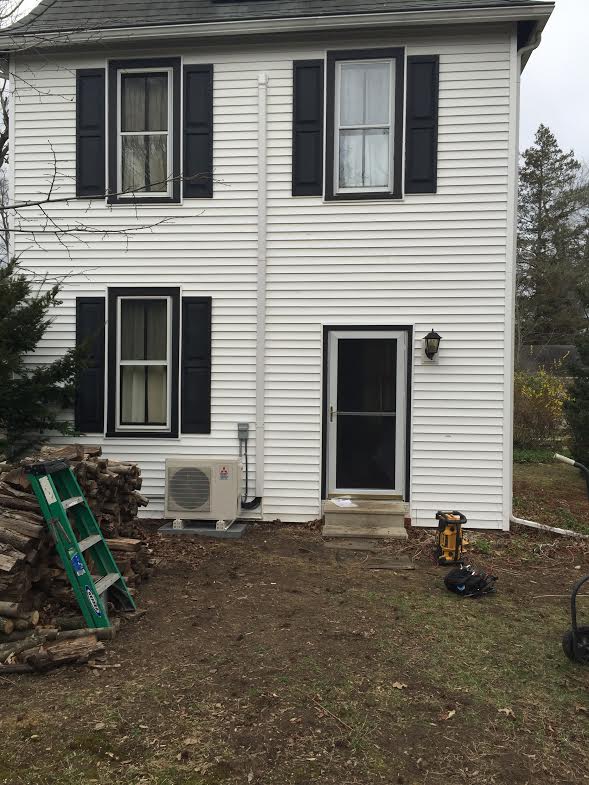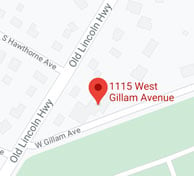 Ductless Heating and Cooling in a Historic Edgewater Park, NJ Home
Ductless Heating and Cooling in a Historic Edgewater Park, NJ Home
This quaint post-and-beam home in Edgewater, NJ, had an interesting history. Built at the beginning of the 20th century, it was originally a blacksmith shop.
Now it’s a residential property. And, the homeowner’s new ductless heating and cooling system brought it up-to-date with the latest and greatest in home comfort -- without making any changes to the look and atmosphere.
In this post, we’ll look at the HVAC challenges in an older home, such as this one. And, we’ll look at why our homeowner decided to upgrade his system.
Finally, we’ll see why he chose a ductless system.
.jpg?width=600&height=600&name=Ductless_Contest_System%20(1).jpg)
Heating and Cooling Historic Homes
One look at this beautiful Edgewater Park, NJ home, and we understood the appeal. There’s a certain rustic charm to old houses like this one. Even if you built one with the same design today, it just wouldn’t seem the same.
It turned out that this home used to be a blacksmith shop. Over the years, various owners converted the rooms and built additions to it.
But the one thing no one added was ductwork for a forced-air system.
For the last few decades, furnace systems using ducts were among the most common heating and cooling systems in the country.
By the 70s, when residential central air was common, this was pretty much the only way people built new homes.
However, retrofitting old homes this way has never been popular.
Drawbacks of ductwork in older homes
Adding ducts and vents takes up a lot of room. You don’t notice when a house was designed with it in mind. But the equipment is usually two or three feet wide.
That means building out soffits, or enclosures, in each room to hide the ductwork. Then, we usually have to take up a closet or two, so we can house all the equipment.
It’s no wonder our homeowner wasn’t interested in doing this. After all, why would he want to spend all that extra money to make his rooms seem smaller?
So, like many people, he relied on solutions that took up less room — but also used more energy and didn’t work as well.
Baseboard heating and window air conditioners
This home had baseboard heating and window air conditioners. The heaters ran along the floor. But they used a lot of electricity and took a long time to warm up a room.
 Meanwhile, the window ACs were loud and bulky. Plus, our homeowner had to drag them in and out of storage every year.
Meanwhile, the window ACs were loud and bulky. Plus, our homeowner had to drag them in and out of storage every year.
Eventually, he was ready for an upgrade. He needed something better than what he already used. And, he didn’t want to add ductwork.
He told us all this when he called ECI for a consultation. And, as we went through some options with him, one stuck out in particular.
Mitsubishi Electric Ductless Mini-Splits Heat and Cool Historic Homes
When our homeowner learned about how Mitsubishi ductless mini splits work, he realized it would work wonders in a home like his.
And he wasn’t alone in this thinking.
These systems don’t take up anywhere near as much room as forced-air setups, they often work even better than a furnace with ducts and vents.
At ECI, we’ve installed them in all sorts of homes, from new construction to Civil War-era houses.
The significant advantage for older homes is that you don’t need to change anything about how your rooms are set up.
How mini-splits work
You can read up on exactly how these systems work here, here and here. But we’ll run you through the basics here.
A mini split gets its name because the system is split into two parts: the outdoor unit and indoor components.
Outside is a heat pump that handles the heat transfer process. In the winter, it draws thermal energy and sends it inside. In the summer, it expels the heat inside your home to the outdoors.
Inside are the air handlers. These circulate the air inside your home.
To connect these two components, we run a narrow, flexible line with refrigerant that carries the heat back and forth.
Since the line is less than three inches around, we can often run it along the walls or in between the rafters. This way, they’re barely noticeable — if at all.
Benefits of ductless mini-splits
In a home like this, relying on just a few small line sets to hook up a whole-home heating and cooling solution was perfect, and offers other benefits as well:
-
Energy Efficiency
-
Quiet Operation
-
Zoned Heating and Cooling
The big one is energy efficiency. Plainly put, these systems use less energy to provide the same, if not better, heating and cooling than traditional methods.
Less energy, of course, means paying less on your utility bills.
Next, the air handlers are whisper quiet. Literally. Unless you’re standing right under them in total silence, you won’t hear a thing.
Finally, they offer zoned HVAC. In other words, each handler works independently of the others.
This comes in handy when you have a house where the upstairs rooms are warmer or colder than the rest of the house.
Installing a Mitsubishi Mini-Split in a Turn-Of-The-Century Home
Once our homeowner was sure that a Mitsubishi mini split was the way to go for his turn-of-the-century home, we helped him decide where to place the equipment.
After all, the idea was to keep it all as out of sight as possible.
The heat pump was easy enough. It resembles the usual sort of central air conditioning compressors you see outside people’s homes.
But it’s smaller and narrower. And, much, much quieter.

So, our homeowner asked us to place it in the back of his house, near the door. This way, you can’t see it from the front or side of the house.
And it’s easily accessible.
Next came the air handlers inside. Since this was a beam-and-post home, as opposed to, say, brickwork or stucco, we ran the lines in between the rafters.
As a result, you only see the air handlers inside. All the lines are behind them.
And to make them even less noticeable, we lined them up with the tops of windows.

The air handlers do a great job circulating the air. So, they don’t need to be in the center of the room or a prominent spot.
Instead, when they match lines and contours already in the room, your eye isn’t drawn to them. It helps that they’re also close to the ceiling.
In all, it only took a few days to revamp the heating and cooling in this old home completely.
Now, each room is precisely the right temperature. And it costs less to maintain. And it’s much quieter.
All in all, it's a great new way to bring comfort to an older home.
Ductless mini splits are just one way to heat and cool and older home without changing the look of your house with ductwork. Contact ECI for a free consultation, and we’ll help you find the option that’s perfect for your home.




